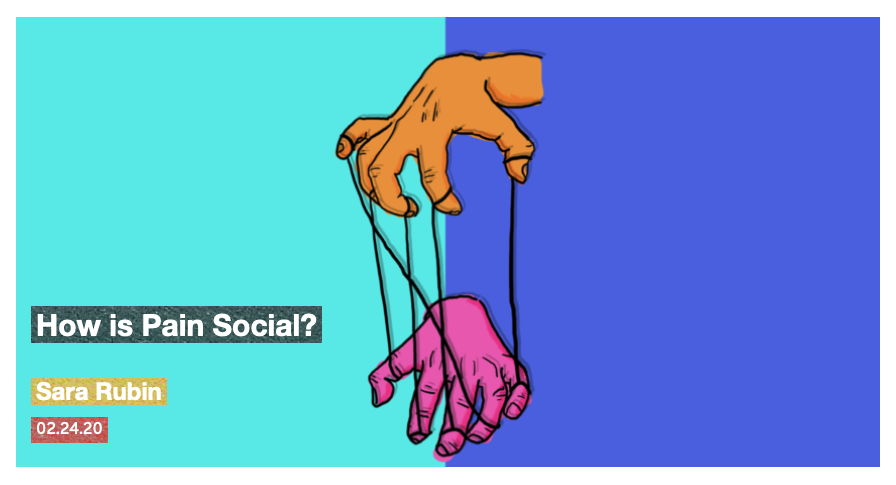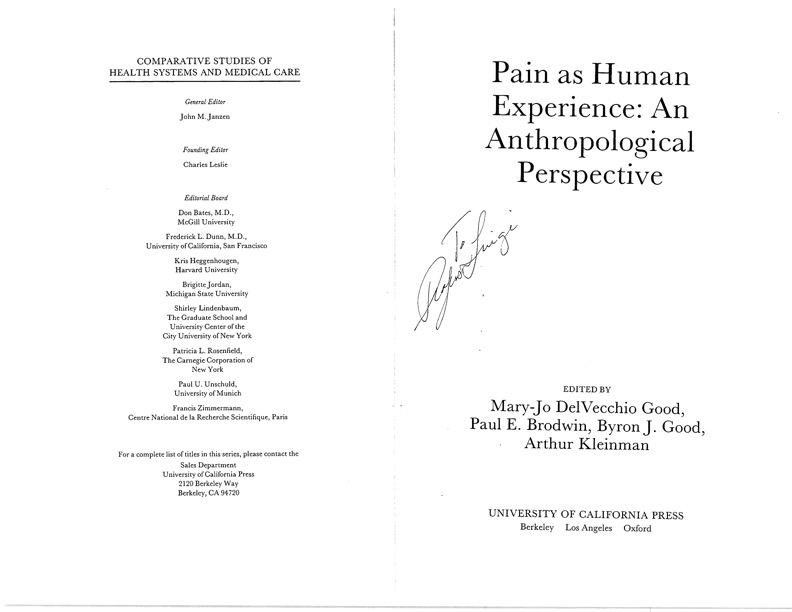Click the images to download the readings for the working group sessions. You need a password to do so. If you don’t have it, email us. You can find our emails on the contact page.
For May 16, 2023 we will be reading the draft introduction to a special issue of American Literature on pain, edited by Sari Altschuler and Thomas Constantinesco.

Here is the CFP they sent out in December 2021 which was one of the inspirations for this working group:
Call for Papers—Special Issue of American Literature: Pain
Pain is notoriously tricky. Pain is central to the human condition, but its very nature—at once biological, cultural, and social—slips easily from grasp. Recent events like the murder of George Floyd and, more broadly, the public spectacle of recorded Black pain, the COVID-19 pandemic, the refugee crisis, and the opioid crisis have moved problems of pain and its representation to the fore.
The moment is ripe to reevaluate pain in literary and cultural studies. Thirty-five years after its publication, Elaine Scarry’s The Body in Pain (1985) remains a cornerstone of pain studies, as scholars continue to read the experience of pain through its diptych: pain “unmakes” the world of the subject by destroying language even as it “makes” art and culture from emotional, psychological, and physical suffering. Pain destroys, but it also creates. Pain exhausts as much as it enrages, inflames, and inspires. From narratives of enslavement to sentimental fictions—from tales of labor injuries to stories of war wounds, illness, and chronic suffering—American literature provides a voluminous archive with which to interrogate and reimagine this dialectical model of pain as well as to reflect on the many ways pain is experienced, suffered, inhabited, resisted, and transformed through representation. Building on the more recent work of Rachel Ablow, Cynthia Davis, Justine S. Murison, Margaret Price, Michael D. Snediker, Simon Strick, Keith Wailoo, and Xine Yao, among others, this issue calls for scholars to attend to the complex work of pain in American literature and culture in the wake of Scarry’s critical paradigm and cultural shifts over the past few decades, perhaps reassessing how pain operates at the level of discourse, ideology, subject formation, and collective affiliation, as well as its social, political, and aesthetic forms. How we know pain, how we experience it, and how we understand its nature—that is, questions of epistemology, phenomenology, and ontology—are also ripe for rethinking.
We welcome submissions on any period or genre of American literature, but we are particularly interested in the shift from the eighteenth to the twentieth centuries, when pain became “unacceptable” (Karen Halttunen) and the culture of pain moved from “prayer to pain killers”(Joanna Bourke). We are also especially interested in reconsiderations of the race, gender, ability, sexuality, and class dimensions of pain and its cultural forms.
We invite essays that might address any of the following topics:
- The aesthetics, representations, and genres of pain
- Varieties and intensities of pain and/in the politics of suffering
- Race and pain
- Gendered pain; pain and sexuality
- The global politics of US pain; American figurations of pain in and beyond US borders
- Acute or chronic pain; pain and disease
- Pain and illness; pain beyond/outside of illness; pain and disability
- Feeling/unfeeling
- Pain and the will
- Religious and/or secular understandings of pain
- Pain and memory; pain and public memory/memorialization
- Technologies of pain management; pain, drugs, stigma
- Pain, woundedness, and vulnerability
- Pain and the bodymind; pain and personhood
- Pain and the subject/object; pain and subjectivity/objectivity
- Communities of pain; communal or distributed pain
- Human and nonhuman pain, especially in relation to environmental justice
- Epistemologies and ontologies of pain
- Spectacles of pain and pain’s invisibility
For April 11, 2023 we will be reading:
Valeria Carcamo-Cavazos and Maxime Cannesson, “Opioid-Free Anesthesia: the Pros and Cons,” Advances in Anesthesia 40 (2022) 149-166. doi: 10.1016/j.aan.2022.07.003

Chapter 3 from Martin Pernick, A Calculus of Suffering: Pain, Professionalism, and Anesthesia in Nineteenth-Century America. New York: Columbia University Press, 1985. TLDR on this: “To Suffer is To Live: The Benefits of Pain” (pp. 42-58) seems most relevant.

For April 6, 2023 we will be reading:
Sarah Rubin’s “How Is Pain Social,” published as part of a cluster of articles on Pain in Post45, Feb. 2020.

Theresa De Silva, et. al., “Potential Unintended Effects of Standardized Pain Questionnaires: A Qualitative Study” Pain Medicine 21 no. 2 (Feb 2020) e22-e33. doi: 10.1093/pm/pnz252

For Feb 27, 2023 we will be reading:
A blog post on pain scales called “Boyfriend Doesn’t Have Ebola. Probably” by Allie Brosh of Hyperbole and a Half.
Amelia Williamson and Barbara Hoggart, “Pain: A Review of Three Commonly Used Pain Rating Scales,” Journal of Clinical Nursing 14 (2005): 798-804.

A selection from Rachel Ablow, Victorian Pain, Princeton University Press, 2017.

For December 13, 2022 we will be reading:
Martin Pernick, “‘They Don’t Feel It Like We Do’: Social Politics and the Perception of Pain,” from A Calculus of Suffering: Pain, Professionalism, and Anesthesia in Nineteenth-Century America. Columbia University Press, 1985.

Kelly Hoffman, Sophie Trawalter, Jordan Axt, and M. Norman Oliver, “Racial Bias in Pain Assessment and Treatment Recommendations, and False Beliefs about Biological Differences between Blacks and Whites.” Proceedings of the National Academy of Sciences 113 no. 16 (19 April 2016) doi: 10.1073/pnas.1516047113

For November 29, 2022 we will be reading:
Emma Sheppard, “The Case of Chronic Pain.” in The Disability Studies Bioethics Reader. Edited by Joel Michael Reynolds and Christine Wieseler. doi: 10.4324/9781003289487

“Rethinking Chronic Pain” Editorial in The Lancet, vol. 397 (29 May 2021): 2023. doi: 10.1016/S0140-6736(21)01194-6

Two additional readings are available on our Readings Downloads page for those who are interested:
Susan Wendell “Unhealthy Disabled: Treating Chronic Illnesses as Disabilities.” Hypatia, vol. 16 no. 4 (Fall 2001): 17-33. <https://www.jstor.org/stable/3810781>
Stephen Cohen, Lene Vase, and William Hooten, “Chronic Pain: An Update on Burden, Best Practices, and New Advances.” The Lancet, vol. 397 (29 May 2021): 2082-2097. doi: 10.1016/S0140-6736(21)00393-7
For October 25, 2022 we will be reading:
Timothy Kirk, “The Meaning, Limitations and Possibilities of Making Palliative Care a Public Health Priority by Declaring it a Human Right.” Public Health Ethics 4 no. 1 (2011): 84-92. doi:10.1093/phe/phr002

Temel, Jennifer S. et al., “Early Palliative Care for Patients with Metastatic Non-Small-Cell Lung Cancer.” New England Journal of Medicine 363 (19 August 2010): 733-742. doi: 10.1056/NEJMoa1000678

For September 27, 2022 we will be reading:

Kleinman et al., “Pain as Human Experience: An Introduction” from Pain as a Human Experience: An Anthropological Perspective. ed. Mary-Jo DelVecchio Good, et al. Berkeley: University of California Press, 1992.

Rathmell and Fields, “Pain: Pathophysiology and Management” in Harrison’s Principles of Internal Medicine, ed. J. Larry Jameson, et al. McGraw Hill, 2018.